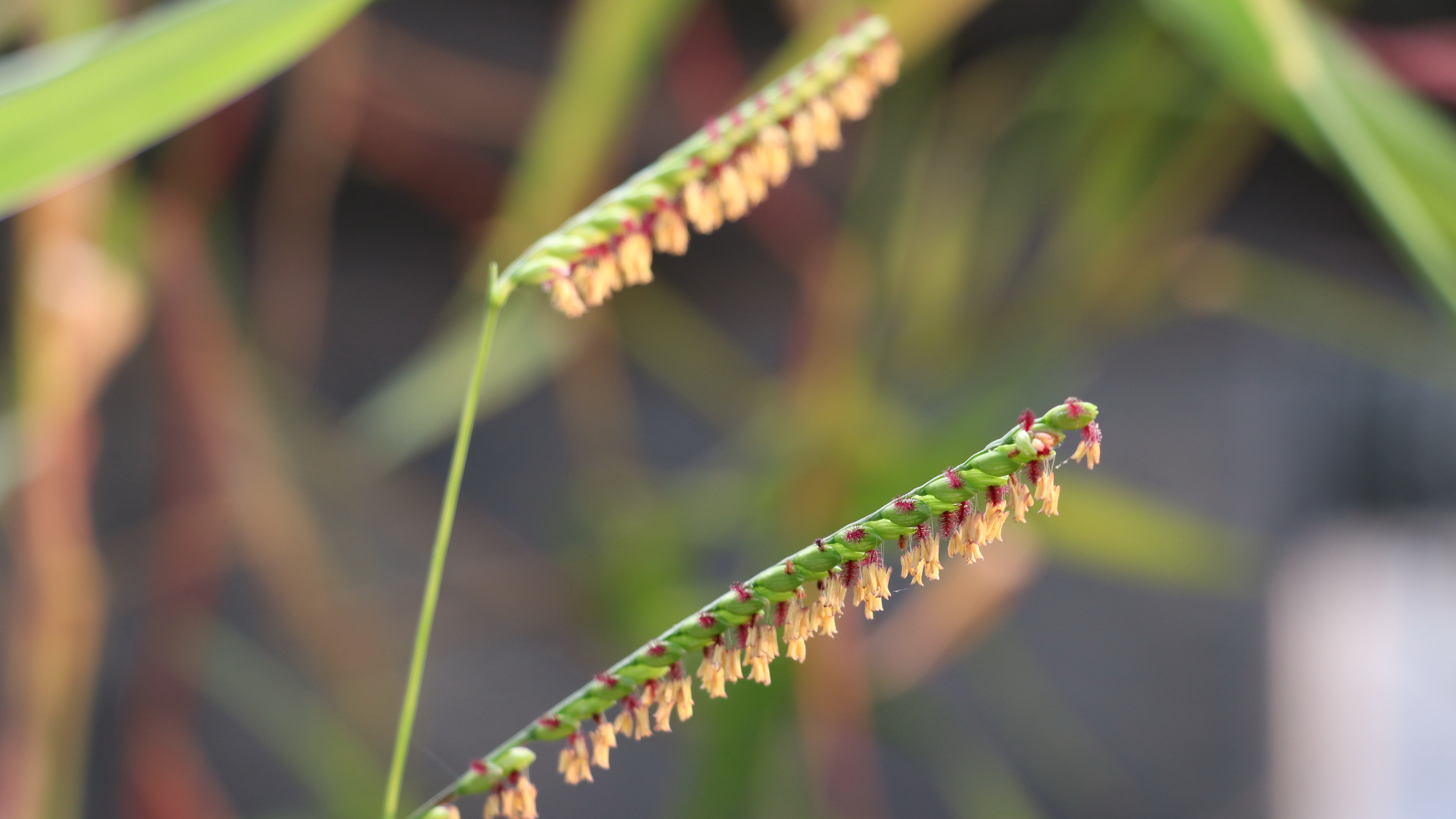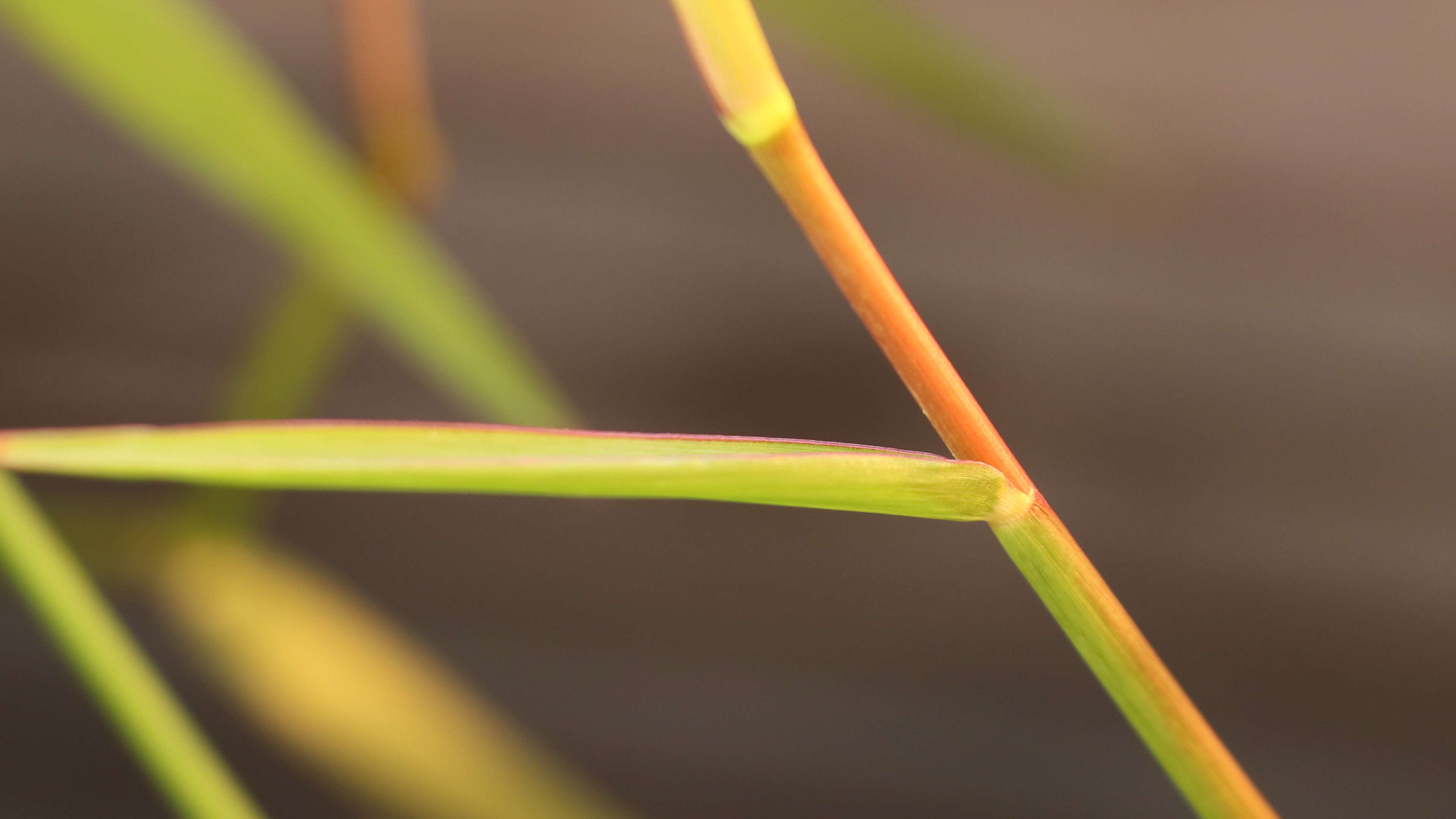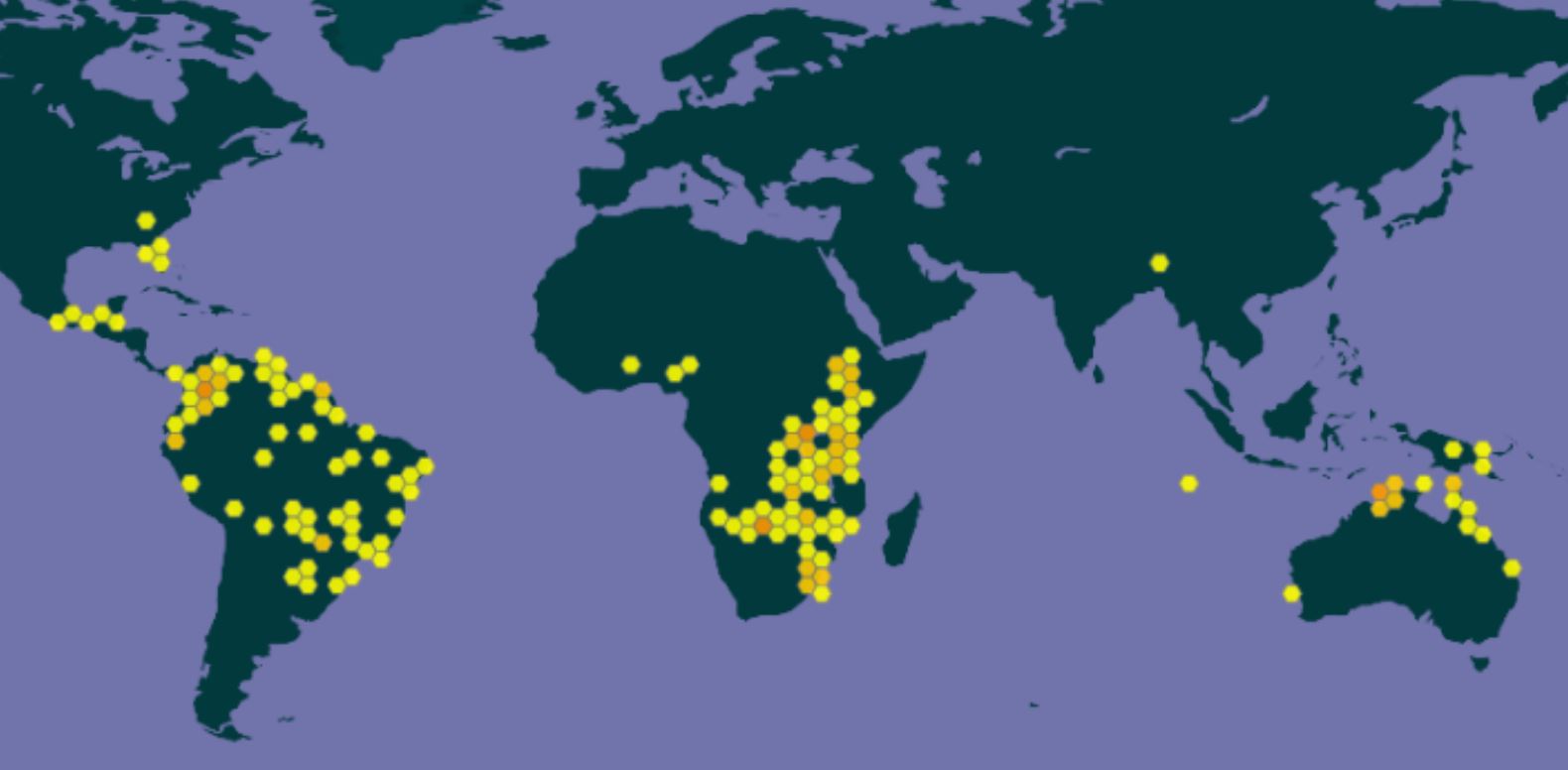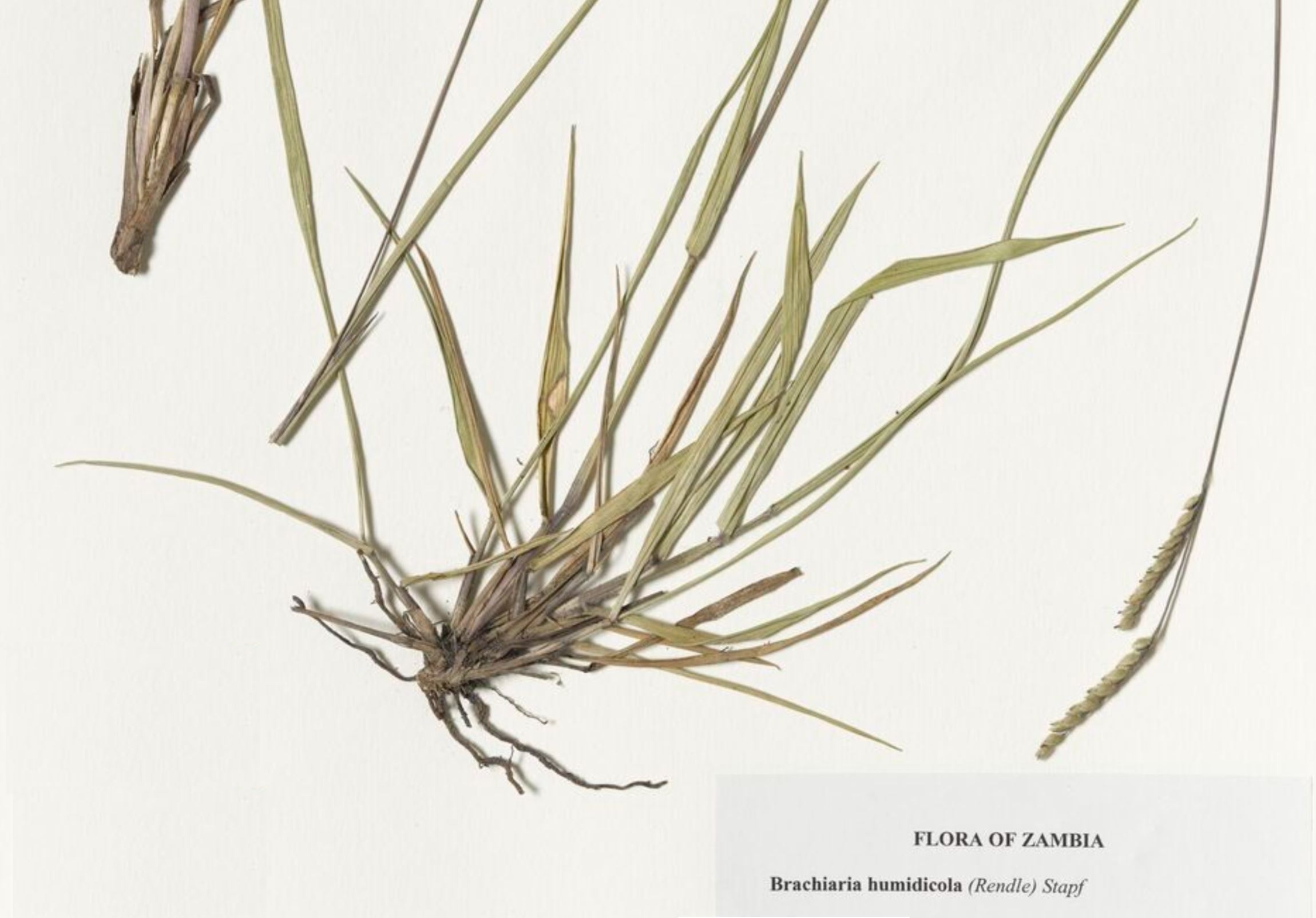The beauty of grass flowers: Urochloa dictyoneura
Urochloa dictyoneura, a tropical grass, blooms with subtlety. Its slender inflorescences are adorned with tiny spikelets, forming patterns that catch the golden light of early morning or late afternoon. When sunlight filters through the dew on its delicate flowering spikes, it creates a shimmering effect just like nature's own glittering tapestry.

Two spikelets of Urochloa dictyoneura, showing the long anthers hanging from the spikelet. The red, bushy stigmas are perfectly adapted to catch wind-dispersed pollen.
I recently became aware of the beauty of these flowers when Juan Jiménez, a postdoc in my lab, left a few pots growing in our glasshouse after finishing an experiment. Urochloa dictyoneura (also known as Urochloa humidicola) survived the neglect and started flowering the other day. Juan has previously worked with this species, which is used as a forage grass in many countries of South America, including Colombia.
This species originates from tropical Africa but has spread to many tropical regions, where it behaves as an invasive grass. It is known for its hardiness and tolerance to abiotic stress, which largely explains its invasiveness. Therefore, we should be cautious when disposing of plant remains, although the risk of it establishing itself here in the Danish, temperate environment is likely small.

Some other parts of Urochloa dictyoneura are also quite beautiful, such as the blushing stem, which turns red due to neglect — in this case, resulting from nitrogen deficiency.
By the way, if you think you've seen these photos before, you're partly right. In the past, I posted another blog on the flowers of the wild rice species, Oryza longistaminata, and we also recently got the cover of Journal of Experimental Botany with photos of rice flowers. So, although the photos in this blog post are of a completely different species of grass, the flowers might appear quite similar to a non-specialist.

The global distribution of Urochloa dictyoneura, with observations from Africa indicating its native distribution range, while the points from South America and Australia show areas where it has been introduced. (c) www.gbif.org.

Until quite recently, Urochloa dictyoneura was classified in the genus Brachiaria, as shown on the herbarium sheet. However, due to modern molecular approaches, grasses are often reassigned to different genera whenever phylogenetic relationships are revised. It was also previously known as Urochloa humidicola, but this name is no longer valid. Tip of the day: If you're unsure of the current species name, please consult 'Plants of the World Online' maintained by the Royal Botanic Gardens, Kew. Source: Gbif.org.
Two spikelets of Urochloa dictyoneura, showing the long anthers hanging from the spikelet. The red, bushy stigmas are perfectly adapted to catch wind-dispersed pollen.
I recently became aware of the beauty of these flowers when Juan Jiménez, a postdoc in my lab, left a few pots growing in our glasshouse after finishing an experiment. Urochloa dictyoneura (also known as Urochloa humidicola) survived the neglect and started flowering the other day. Juan has previously worked with this species, which is used as a forage grass in many countries of South America, including Colombia.
This species originates from tropical Africa but has spread to many tropical regions, where it behaves as an invasive grass. It is known for its hardiness and tolerance to abiotic stress, which largely explains its invasiveness. Therefore, we should be cautious when disposing of plant remains, although the risk of it establishing itself here in the Danish, temperate environment is likely small.
Some other parts of Urochloa dictyoneura are also quite beautiful, such as the blushing stem, which turns red due to neglect — in this case, resulting from nitrogen deficiency.
By the way, if you think you've seen these photos before, you're partly right. In the past, I posted another blog on the flowers of the wild rice species, Oryza longistaminata, and we also recently got the cover of Journal of Experimental Botany with photos of rice flowers. So, although the photos in this blog post are of a completely different species of grass, the flowers might appear quite similar to a non-specialist.
The global distribution of Urochloa dictyoneura, with observations from Africa indicating its native distribution range, while the points from South America and Australia show areas where it has been introduced. (c) www.gbif.org.
Until quite recently, Urochloa dictyoneura was classified in the genus Brachiaria, as shown on the herbarium sheet. However, due to modern molecular approaches, grasses are often reassigned to different genera whenever phylogenetic relationships are revised. It was also previously known as Urochloa humidicola, but this name is no longer valid. Tip of the day: If you're unsure of the current species name, please consult 'Plants of the World Online' maintained by the Royal Botanic Gardens, Kew. Source: Gbif.org.
